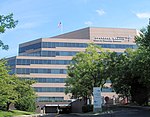History
Orincon was established in 1973 in San Diego by University of California, San Diego professors Dr. Daniel Alspach and Dr. Harold Sorenson, and UC Irvine professor Dr. Jim Meditch. Operations began in 1975 with three government contracts.
During the Cold War, Orincon helped design the SOSUS tracker system to follow the Soviet Ballistic Missile Submarine. Convinced of the significance of SOSUS, Alspach wrote, "I see this as part of the chain that ended the Cold War. The SOSUS was so successful, that the Russians had to spend tremendous amounts of money trying to quiet their subs to avoid detection. At the same time, they spent a great deal trying to counter U.S. President Ronald Reagan's Star Wars technology. This, with the inherent inefficiencies of their socialistic economic system, broke the bank and led to the collapse of the Soviet Union."
Indeed, Soviet spies John Anthony Walker and Jerry Alfred Whitworth in the U.S. Navy revealed to the Russians that their submarines were noisy, and thus, easily detectable. This knowledge led to the development of "quieting" technology that Russia later sold to China.
In 1990, Orincon's primary business was antisubmarine warfare; however, the U.S. Navy deprioritized antisubmarine warfare technology spending in anticipation of the end of the Soviet Union. Despite the hardship of transformation in the 1990s, Orincon grew by 25 percent in 1998. In fact, until Lockheed Martin acquired Orincon in June 2003, Orincon experienced growth every year since its inception. Orincon's customers have included, but are not limited to, the United States Navy, Department of Transportation, National Cancer Research Institute, and the Federal Aviation Administration.
Orincon developed the Intelligent Vehicle Sensor as part of its Airport Classification and Tracking System (ACATS). From 1990 to 1998, there were five fatal ground collisions on U.S. airport runways, and in 1996, there were 280 near misses. The sensor was installed at Long Beach Airport to track airplanes on the ground to avoid runway incursions.

The Lockheed S-3 Viking is a 4-crew, twin-engine turbofan-powered jet aircraft that was used by the U.S. Navy (USN) primarily for anti-submarine warfare. In the late 1990s, the S-3B's mission focus shifted to surface warfare and aerial refueling. The Viking also provided electronic warfare and surface surveillance capabilities to a carrier battle group. A carrier-based, subsonic, all-weather, long-range, multi-mission aircraft; it carried automated weapon systems and was capable of extended missions with in-flight refueling. Because of its characteristic sound, it was nicknamed the "War Hoover" after the vacuum cleaner brand.

The Lockheed P-3 Orion is a four-engine turboprop anti-submarine and maritime surveillance aircraft developed for the United States Navy and introduced in the 1960s. Lockheed based it on the L-188 Electra commercial airliner. The aircraft is easily distinguished from the Electra by its distinctive tail stinger or "MAD Boom", used for the magnetic detection of submarines.

The Sikorsky SH-60/MH-60 Seahawk is a twin turboshaft engine, multi-mission United States Navy helicopter based on the United States Army UH-60 Black Hawk and a member of the Sikorsky S-70 family. The most significant modifications are the folding main rotor and a hinged tail to reduce its footprint aboard ships.
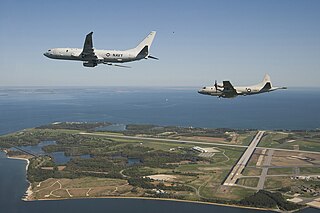
A maritime patrol aircraft (MPA), also known as a patrol aircraft, maritime reconnaissance aircraft, or by the older American term patrol bomber, is a fixed-wing aircraft designed to operate for long durations over water in maritime patrol roles — in particular anti-submarine warfare (ASW), anti-ship warfare (AShW), and search and rescue (SAR). It is an important asset among other maritime surveillance resources like satellites, ships, unmanned aerial vehicles or helicopters.. In regard to the ASW role they can carry sonar buoys as well as torpedoes and are supposed to fly at low altitudes.

The GIUK gap is an area in the northern Atlantic Ocean that forms a naval choke point. Its name is an acronym for Greenland, Iceland, and the United Kingdom, the gap being the open ocean between these three landmasses. The term is typically used in relation to military topics.
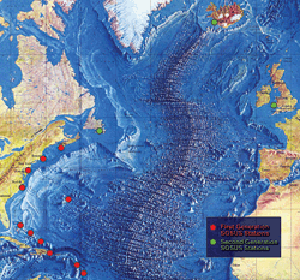
The Sound Surveillance System (SOSUS) was a passive acoustic system developed by the United States Navy to track Soviet submarines. The system's true nature was classified with the name and acronym SOSUS themselves classified. The unclassified name Project Caesar was used to cover the installation of the system and a cover story developed regarding the shore stations, identified only as a Naval Facility (NAVFAC), being for oceanographic research. In 1985, as the fixed bottom arrays were supplemented by the mobile Surveillance Towed Array Sensor System (SURTASS) and other new systems were coming on line, the name itself changed to Integrated Undersea Surveillance System (IUSS). The commands and personnel were covered by the "oceanographic" term until 1991 when the mission was declassified. As a result, the commands, Oceanographic System Atlantic and Oceanographic System Pacific became Undersea Surveillance Atlantic and Undersea Surveillance Pacific, and personnel were able to wear insignia reflecting the mission.

The Naval Undersea Warfare Center (NUWC) is the United States Navy's full-spectrum research, development, test and evaluation, engineering and fleet support center for submarines, autonomous underwater systems, and offensive and defensive weapons systems associated with undersea warfare. It is one of the corporate laboratories of the Naval Sea Systems Command. NUWC is headquartered in Newport, Rhode Island and has two major subordinate activities: Division Newport and Division Keyport in Keyport, Washington. NUWC also controls the Fox Island facility and Gould Island. It employs more than 4,400 civilian and military personnel, with budgets over $1 billion.
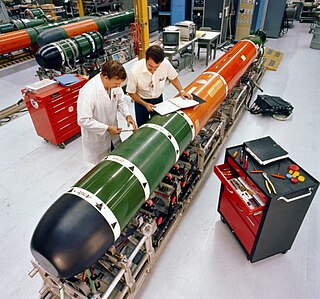
The Mark 48 and its improved Advanced Capability (ADCAP) variant are American heavyweight submarine-launched torpedoes. They were designed to sink deep-diving nuclear-powered submarines and high-performance surface ships.
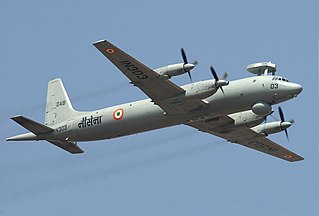
The Ilyushin Il-38 "Dolphin" is a maritime patrol aircraft and anti-submarine warfare aircraft designed in the Soviet Union. It was a development of the Ilyushin Il-18 turboprop transport.

Adak Airport is a state-owned public-use airport located west of Adak, on Adak Island in the Aleutian Islands in the U.S. state of Alaska. The airport is the farthest western airfield with scheduled passenger air service in the entire United States at 176.64W.

Anti-submarine warfare is a branch of underwater warfare that uses surface warships, aircraft, or other submarines to find, track, and deter, damage, or destroy enemy submarines.

Naval Air Station Bermuda, was located on St. David's Island, Bermuda from 1970 to 1995, on the former site of Kindley Air Force Base. It is currently the site of Bermuda International Airport.

Project Artemis was a United States Navy acoustics research and development experiment from the late 1950s into the mid 1960s to test a potential low-frequency active sonar system for ocean surveillance. The at sea testing began in 1960 after research and development in the late 1950s. The project's test requirement was to prove detection of a submerged submarine at 500 nmi. The experiment, covering a number of years, involved a large active element and a massive receiver array.
Geophysical MASINT is a branch of Measurement and Signature Intelligence (MASINT) that involves phenomena transmitted through the earth and manmade structures including emitted or reflected sounds, pressure waves, vibrations, and magnetic field or ionosphere disturbances.
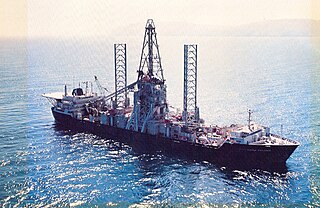
Project Azorian was a U.S. Central Intelligence Agency (CIA) project to recover the sunken Soviet submarine K-129 from the Pacific Ocean floor in 1974, using the purpose-built ship Hughes Glomar Explorer. The 1968 sinking of K-129 occurred approximately 1,600 miles (2,600 km) northwest of Hawaii. Project Azorian was one of the most complex, expensive, and secretive intelligence operations of the Cold War at a cost of about $800 million, or $4 billion today.

The ASW Continuous Trail Unmanned Vessel (ACTUV) is a DARPA funded project launched in early 2010 to develop an anti-submarine drone. ASW is an acronym for Anti-Submarine Warfare. In January 2018 after successful sea trials it was announced that the "Sea Hunter" prototype has transitioned from DARPA to the Office of Naval Research for further development.
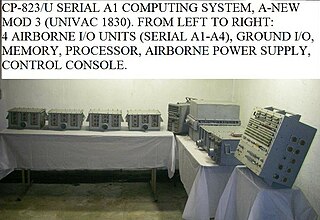
The CP-823/U, Univac 1830, was the first digital airborne 30-bit computing system. It was engineered, built and tested as the A-NEW MOD3 prototype computer for the Lockheed P-3 Orion.
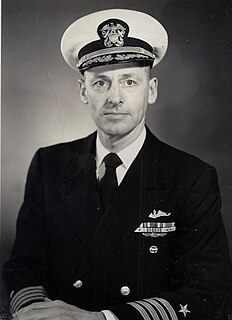
Robert Devore McWethy was a United States Navy Captain and submariner who fought in the Pacific during World War II and later pioneered submarine navigation under the Arctic ice pack. Capt McWethy received the Legion of Merit for his role in the development of SOSUS underwater listening posts as Commander, Oceanographic Systems Atlantic. From the 1970s on he was also active in support of sailing in the navy and at the U.S. Naval Academy.
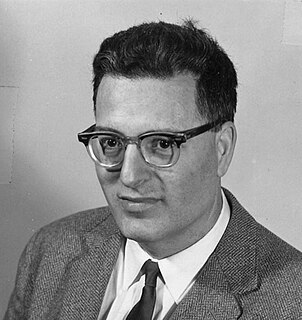
Don Ross was a civilian submariner and acoustics expert. From 1945 to 1987, Ross worked largely with the US Navy, making developments in reduction of submarine detection and underwater noise. Ross is credited with discovering that low-frequency ocean ambient noise is largely determined by shipping, and that ocean ambient noise has been steadily increasing due to human activities. He also made the first detailed measurements of the noise characteristics of nuclear submarines.

Naval Facility Point Sur was one of 30 secret sites worldwide that were built during the Cold War to detect Soviet submarines. In 1958, the U.S. Navy built a Naval Facility (NAVFAC) ½ mile south of Point Sur on the Big Sur coast to provide submarine surveillance using the classified SOund SUrveillance System (SOSUS). The public was told the station was engaged in oceanographic research.
